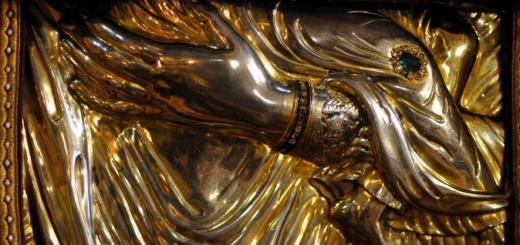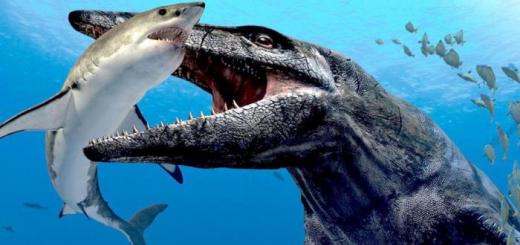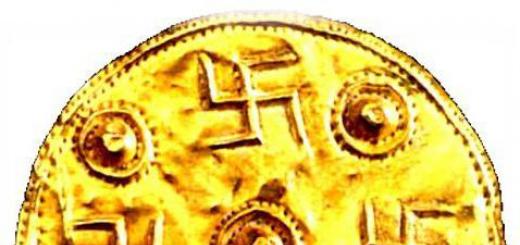The Renaissance (Renaissance) is not only a chronological era, but also an ideological trend, within which a new (in relation to the Middle Ages) view of the world and man was formed.
periodization
End of XIII - XIV centuries. - Proto-Renaissance.
15th century - Early Renaissance.
Late 15th - early 16th century - High Renaissance.
Middle and second half of the 16th century. - Late Renaissance.
Trends
The secularization of culture. Shifting attention to the problems of earthly existence.
Discovery of individuality.
Understanding the personality as the main cultural and life value.
The transition from theocentrism (the main value, the center of everything is God) to anthropocentrism (the center and main value is man).
Rejection of scholasticism.
Recognition of ancient antiquity as the highest cultural value (culture, literature and art of Ancient Greece and Rome).
Recognition of the high role of the ancient heritage for the education of humanity.
Members
Italian poet, founder of humanism, head of the older generation of humanists.
Humanist scientist, representative of the Northern Renaissance, author of the satirical essay "Praise of Stupidity".
English humanist, statesman and writer. Author of the book "The golden book, as useful as it is pleasant, about the best organization of the state and about the new island of Utopia." Tried to describe the ideal social structure.
Writer, representative of humanism in France. Author of the novel Gargantua and Pantagruel.
Michel Montaigne - French philosopher, writer and politician of the Renaissance. He is the author of the book "Experiences", which is an instructive reflection based on his own life.
Miguel Cervantes is a Spanish Renaissance writer. Author of the novel Don Quixote.
Conclusion
During the Renaissance, there were significant changes in people's ideas about the world. The foundation of Renaissance philosophy was humanism. He highlights the understanding of the individual as the main cultural and life value. The word comes from the phrase studia humanitatis (Latin "humanitarian studies") - a complex of academic disciplines, which included grammar, rhetoric, poetry, history, ethics. Initially, it was the teachers of these disciplines who were called humanists. Renaissance humanism proclaims the sciences of man as the most important, since it is they that should contribute to the formation of a harmonious, diversified, morally perfect personality.
Self-knowledge becomes an important component of philosophy. An example of such close attention to oneself is the "Experiments" of Montaigne. Writers and philosophers, scientists-humanists of the era in their works denounce the shortcomings of the earthly world. They see their task in improving society and educating a morally perfect person.
This lesson will focus on the philosophy of the Renaissance. At the turn of the XIV-XV centuries. a new era has begun in the development of the culture of Western Europe. She got the name rebirth(or in French Renaissance). Despite the fact that the Renaissance was based on the rise of education and urban culture of the Middle Ages, the main feature of the Renaissance was the emergence of a fundamentally new culture.
The term "revival" itself entered the historiography of the 19th century thanks to the work of Jacob Burckhardt, published in 1860. This work was called "The Culture of the Renaissance in Italy". However, this term is not an innovation of nineteenth-century historians. Representatives of this era used such expressions as “resurrect”, “give shine to antiquity”, “renew”, etc. They contrasted the new era of light in which they lived with the period of darkness and ignorance, which they considered the Middle Ages. Humanism was the foundation of the Renaissance. This is such an ideological current that brings to the fore the man and the science of man. anthropocentrism(an idealistic view, according to which a person is the focus of the Universe and the goal of all events taking place in the world) was opposed theocentrism(a philosophical concept based on the understanding of God as the absolute, perfect, highest being, the source of all life and any good) of the previous era. The ideal of the humanists was a free, comprehensively developed and morally perfect person, living in harmony with nature. Man was presented as the crown of creation, created in the image and likeness of God and endowed with the ability for consciousness, for creation and creativity.
Culture played a special role in the upbringing of a person.. At the same time, Latin and Greek antiquities, that is, antiquity, became models for the education of man. Humanists rehabilitated pagan literature, poetry, which were rejected in the Middle Ages.
Another feature of humanism was that its representatives not only admired antiquity, but sought to understand this era. In the era of humanism scholasticism(representations cut off from life, based on abstract reasoning, not tested by experience) is replaced by practical research in the field of ethics and aesthetics, politics and economics, rhetoric and logic.
The main characteristics of the philosophy of the Renaissance were:
- anthropocentrism,
- return to antiquity
- rejection of scholasticism
- appeal to research in the humanities,
- own principles.
Consider a few works of Renaissance humanists.
An Italian poet of the 14th century (Fig. 1) writes in his work: “Man knows a lot. He knows animals, birds and fish, knows how many hairs are in a lion's mane and how many feathers are in a hawk's tail. The things cited are for the most part either false or unknown: but even though they are true, they are useless. I ask myself what is the use of knowing the nature of beasts, birds, fish, and snakes and either ignoring or not caring about the knowledge of human nature.
Rice. 1. Francesco Petrarca
For Petrarch, it is important, first of all, to study the nature of man, who is the crown of the universe.
Another famous humanist philosopher of the Renaissance (Fig. 2). In 1509 he published a book « Praise of stupidity ”(Fig. 3), in which he ridiculed the vices of contemporary society. The philosopher makes fun of merchants who deceive buyers, as well as priests who are engaged in their own enrichment. But Erasmus of Rotterdam considers the most stupid merchants, as they "always lie, steal, are greedy, cheat, and for all that they imagine themselves to be the first people in the world."
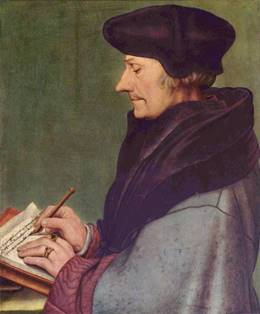
Rice. 2. Erasmus of Rotterdam
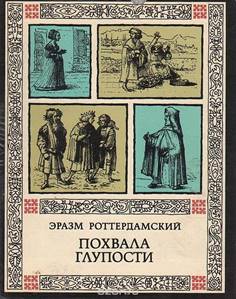
Rice. 3. The work of Erasmus of Rotterdam "Praise of stupidity"
French philosopher, humanist, writer (Fig. 4), author of the novel « Gargantua and Pantagruel” (Fig. 5). In this work, in a satirical form, he depicts a state whose rulers are only capable of doing evil towards their subjects and disturbing the world with wars for their own pleasure.
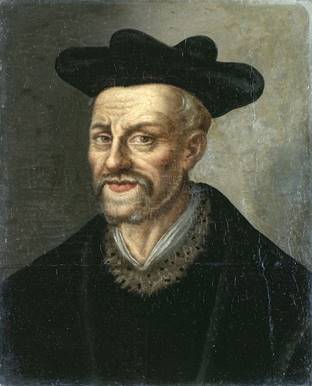
Rice. 4. Francois Rabelais
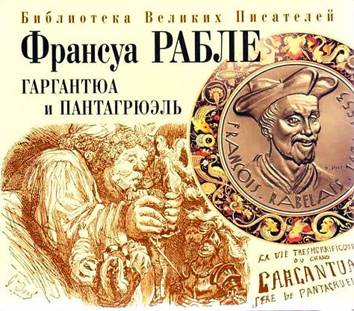
Rice. 5. The work of Francois Rabelais "Gargantua and Pantagruel"
Speaking of the Renaissance, it is impossible not to mention William Shakespeare(fig.6) and Miguel de Cervantes(Fig. 7). Interested in the political teachings of the Renaissance. Despite the difference in the political views of the humanists, they are united practicality.
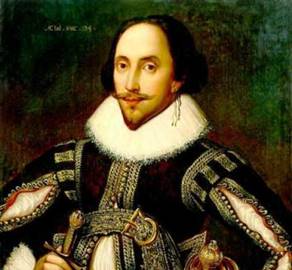
Rice. 6. William Shakespeare
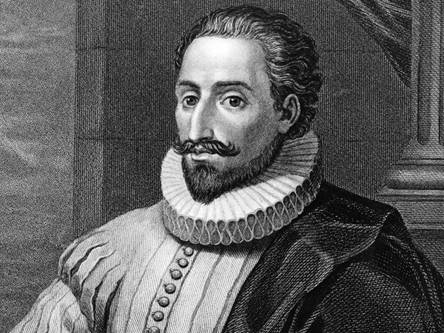
Rice. 7. Miguel de Cervantes
In England, the ideas of humanism had a significant impact on Thomas More- a politician and philosopher, a socialist utopian (Fig. 8). In 1516, he published the Golden Book on the best arrangement of the state and on the new island of Utopia (Fig. 9). Thomas More believed that the cause of all human troubles and misfortunes is private property. He creates the image of an ideal state, which is located on the island of Utopia, which means "non-existent place" in translation. There is no private property on this island, but there are 54 cities, each of which is magnificent, all cities have the same language, customs and laws and they look the same. The inhabitants of the island live happily, not knowing troubles and injustice, thanks to the absence of private property, as well as the centralized distribution of resources. The state supplies the inhabitants of the city with food, clothing, household items and everything else. There is an elected government, a strong ideological component of the state, the education of morality, the impossibility of personal enrichment. But the society of the island of Utopia is hierarchical, that is, the younger ones obey the elders, the women obey the men. The state seeks to control the private life of citizens. A similar socio-political model will be built in Soviet Russia 500 years later.
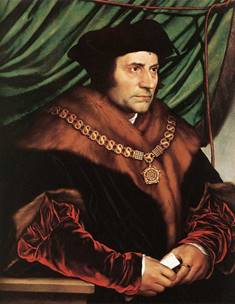
Rice. 8. Thomas More

Rice. 9. "Utopia" by Thomas More
At the beginning of the 17th century, another work appeared in which similar ideas were proclaimed. This is the utopia "City of the Sun", the author of which is an Italian philosopher of the late Renaissance (Fig. 10).
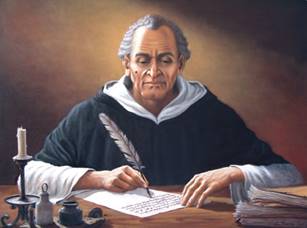
Rice. 10. Tommaso Campanella
French politician, economist, philosopher of the 16th century, member of the Parliament of Paris and lecturer in law (Fig. 11). He is one of the developers of the idea of state sovereignty (that is, independence in resolving political issues). This concept was a serious ideological blow to the position of the Catholic Church in modern Europe.

Rice. 11. Jean Bodin
Speaking of the political teachings of the Renaissance, it is impossible not to mention the name (Fig. 12). Skip his work "Sovereign"(Fig. 13) is impossible. With him begins the era of new political thinking. The crisis of moral values has led to a gap between what should be and what really is. Machiavelli's realism lies in the concept of "the virtue of the sovereign", effectively governing the state. Practicality and a concrete result is a virtue according to Machiavelli. Virtue is also strength and health, cunning and energy, the ability to foresee, plan, force and achieve a specific result.
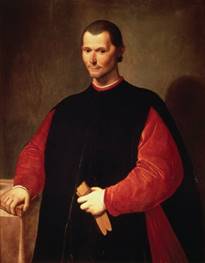
Rice. 12. Niccolo Machiavelli

Rice. 13. The work of Niccolo Machiavelli "The Sovereign"
Summing up the lesson, it should be noted that the Renaissance forms a new type of thinking, striving for reality, a specific practical result. This is critical thinking, not based on dogmas and striving to go beyond. Antique samples become a new ideal of morality. At the center of the Renaissance - a free and capable person.
Homework
- List the main features of the Renaissance.
- What main ideas can you identify in the works of Francesc Petrarch, Erasmus of Rotterdam and Francois Rabelais?
- What works are Thomas More and Niccolò Machiavelli known for?
- Have you read any of the works listed above and would like to read the works of the Renaissance?
- Grandars.ru ().
- Studopedia.ru ().
- Fb.ru ().
- Studfiles.ru ().
- Bakhtin M. Creativity of Francois Rabelais and folk culture of the Middle Ages and the Renaissance.
- Bobkova M.S. Jean Boden: History of life in the era of catastrophes // History through personality. New historical biography. - M., 2005.
- Vedyushkin V.A., Burin S.N. Textbook on the history of modern times. Grade 7, M., 2013.
- Yudovskaya A.Ya. General history. History of the New Age. 1500 - 1800. M .: "Enlightenment", 2012.
- Nemilov A.N. Erasmus of Rotterdam and the Northern Renaissance // Erasmus of Rotterdam and his time. - M., 1989.
- Niccolo Machiavelli. Sovereign.
- Romanchuk A. The role of Francesco Petrarca in shaping the image of a doubting intellectual // Francesco Petrarca and European culture. - M.: Nauka, 2007.
- Tenenbaum B. The Great Machiavelli: The Dark Genius of Power: "Does the End Justify the Means?" - M.: Yauza, Eksmo, 2012.
- François Rabelais, Gargantua and Pantagruel. / Translation by N.M. Lyubimov. -M.: Fiction, 1973.
- Erasmus of Rotterdam. Praise of stupidity






